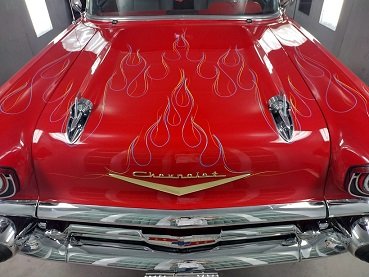Lethe200
Senior Member
- Location
- San Francisco Bay Area
We have a 2017 SUV and it has over two dozen computer chips in it. So no, we don't work on our car. Love to look at old classic cars, but have no interest in owning one.
The 454 is an LS-6 from a 1970 Corvette. In stock form, it produced 450hp and 500 ft lbs of torque. However, I installed a Lunati " LS6 Replacement Cam." It's a solid lifter cam, 238/238 duration @ .050 lift and .550/.550 lift with 112 deg lobe separation. That plus a set of headers should have upped the HP a bit. On this side of the pond, we call that a stout cam.I'm not familiar with the phrase, "stout cam". Maybe I'm from the wrong part of the world. But anyway, is this in reference to lobe separation and or the valve overlap period? Causing that slightly erratic idle I like to hear. Maybe more lift too?
454ci, would that be from the 70's?
Interesting what you have done to the front end. Do you feel the rear might need some form of a better location, an A-Frame perhaps to stop sideways movement of the axle on the springs? Or do you feel it's not necessary?

The 454 is an LS-6 from a 1970 Corvette. In stock form, it produced 450hp and 500 ft lbs of torque. However, I installed a Lunati " LS6 Replacement Cam." It's a solid lifter cam, 238/238 duration @ .050 lift and .550/.550 lift with 112 deg lobe separation. That plus a set of headers should have upped the HP a bit. On this side of the pond, we call that a stout cam.
As for the rear end, It's pretty hard to beat parallel leaf springs for simplicity. I could go all out with a triangulated 4 link coil over, but, we're not looking to race the car, so, maximum traction isn't an issue.
Looking to the future, I'm going to install a decent 2 carb tunnel ram on the engine. But, I'll have to find another hood as I don't really want to cut a hole in this one.
View attachment 288740
